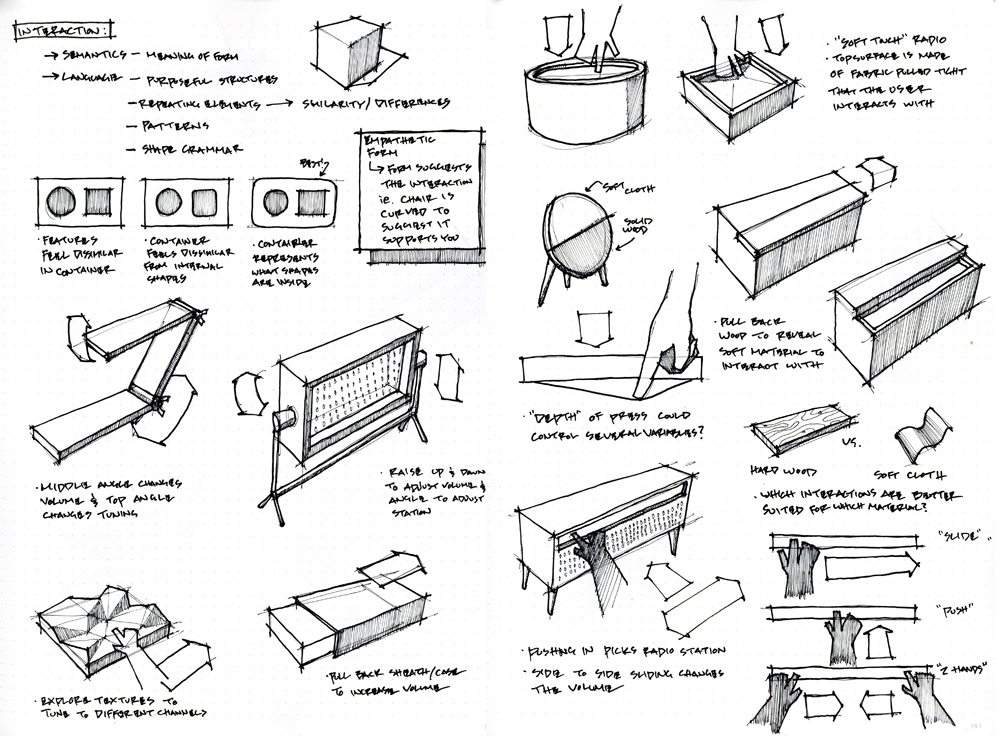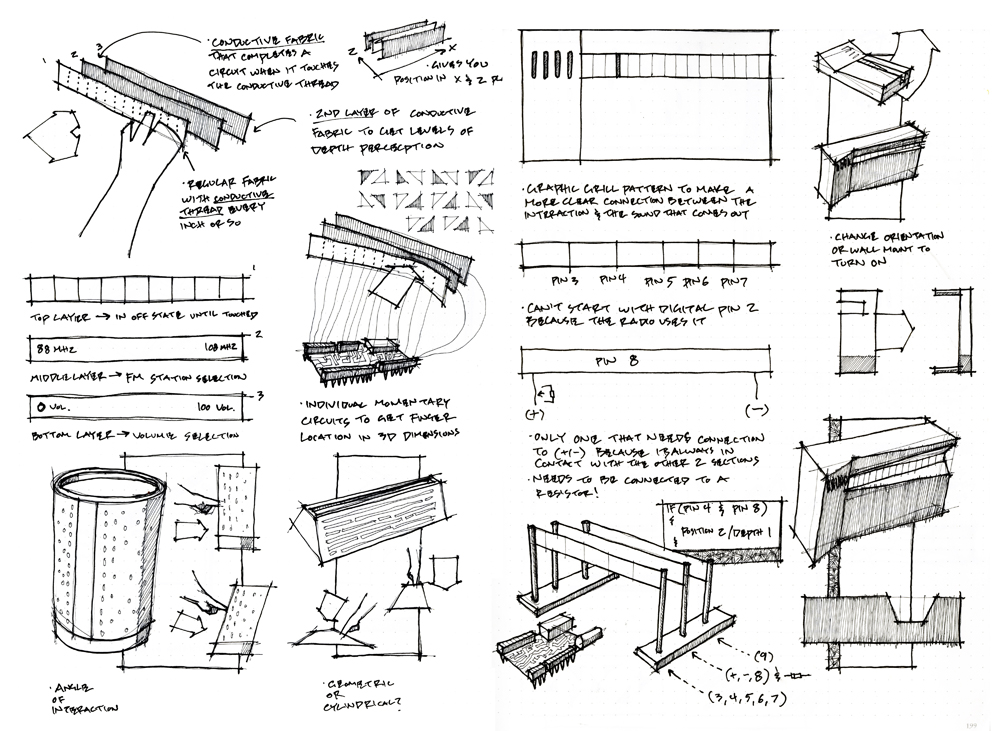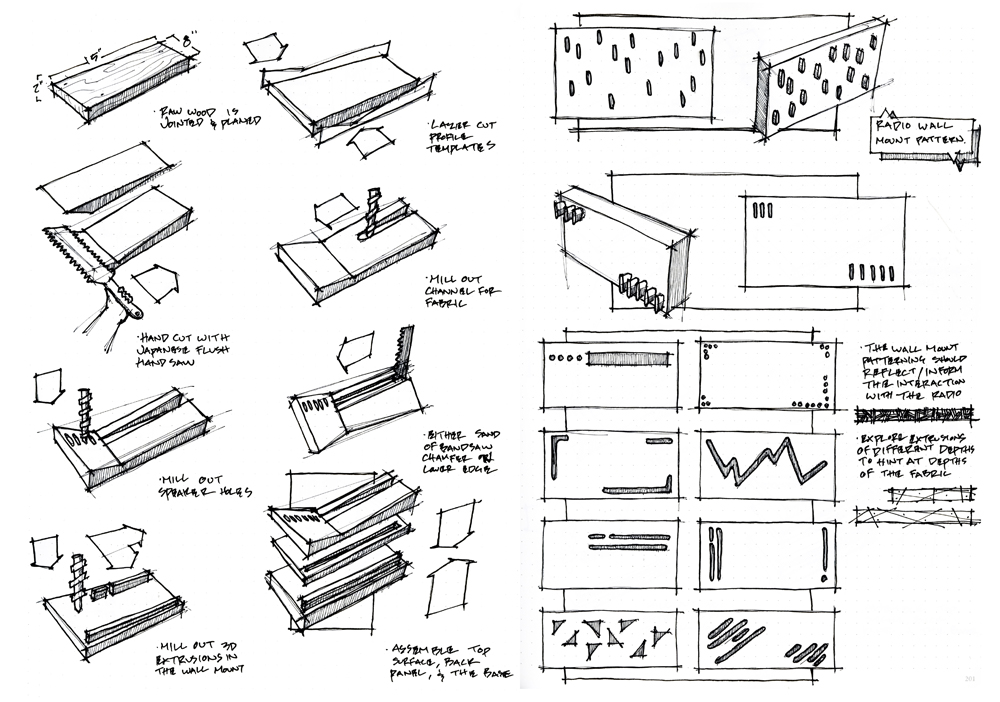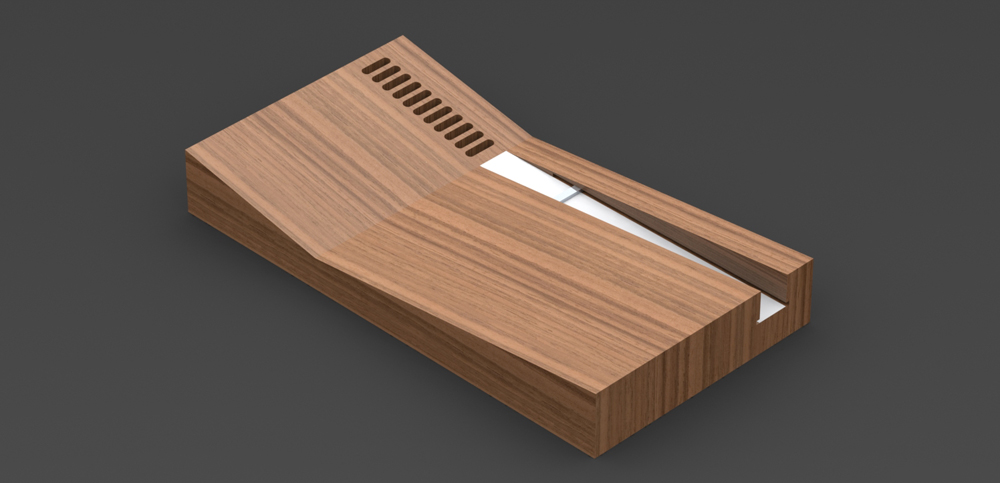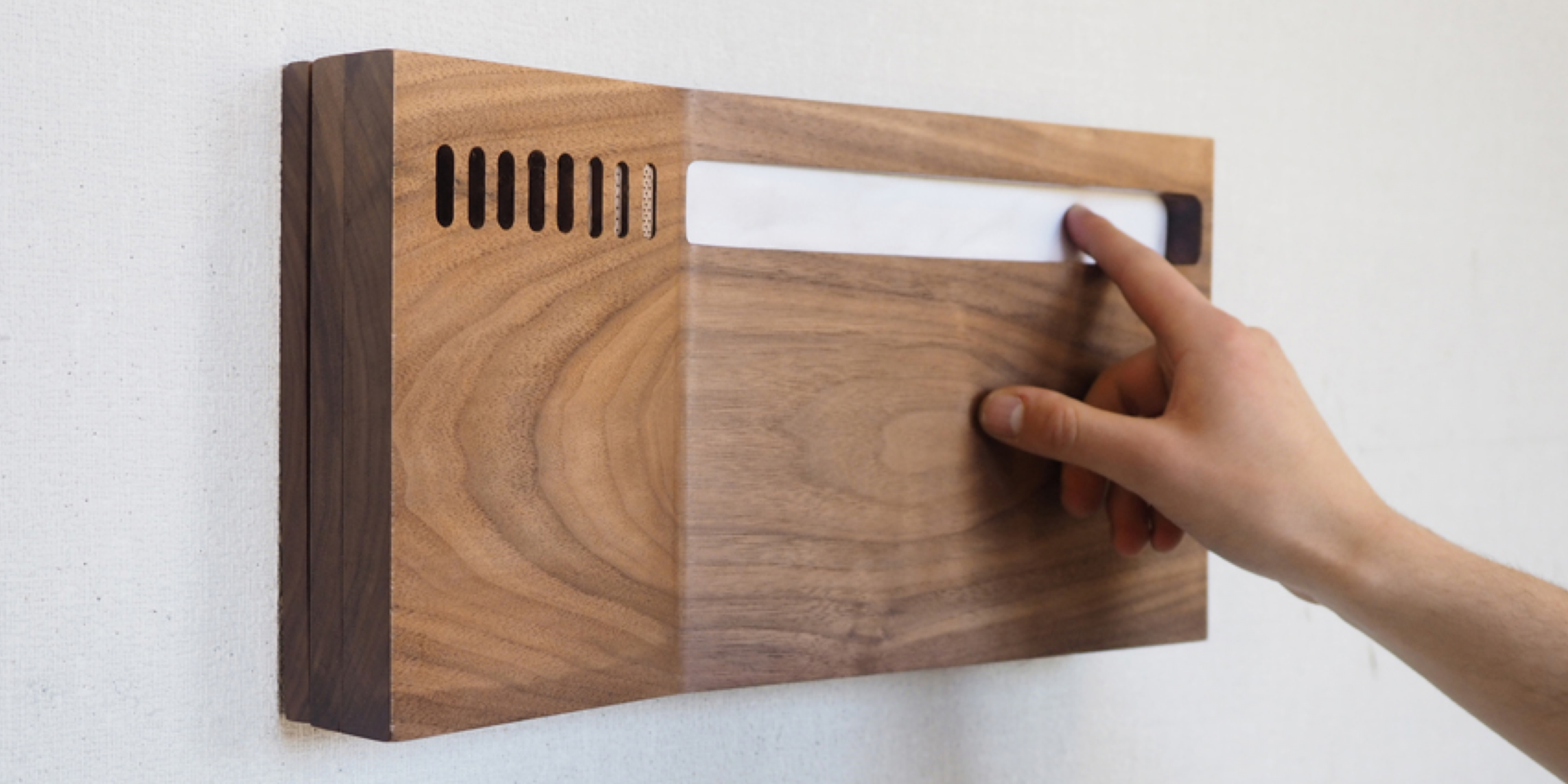
Radio: Experimental Form
Re-imagining the radio control experience
Audio broadcasting radios have been around since the 1920s, yet even to this day their control interface shares many similarities with those designed nearly 100 years ago. The knobs, sliders, and switches on modern radios are easy to use, but don’t inform the user what radio controls (eg. volume, station, power, etc.) they embody. What if we could re-imagine the entire radio control experience to create a more meaningful relationship between the user and the artifact?
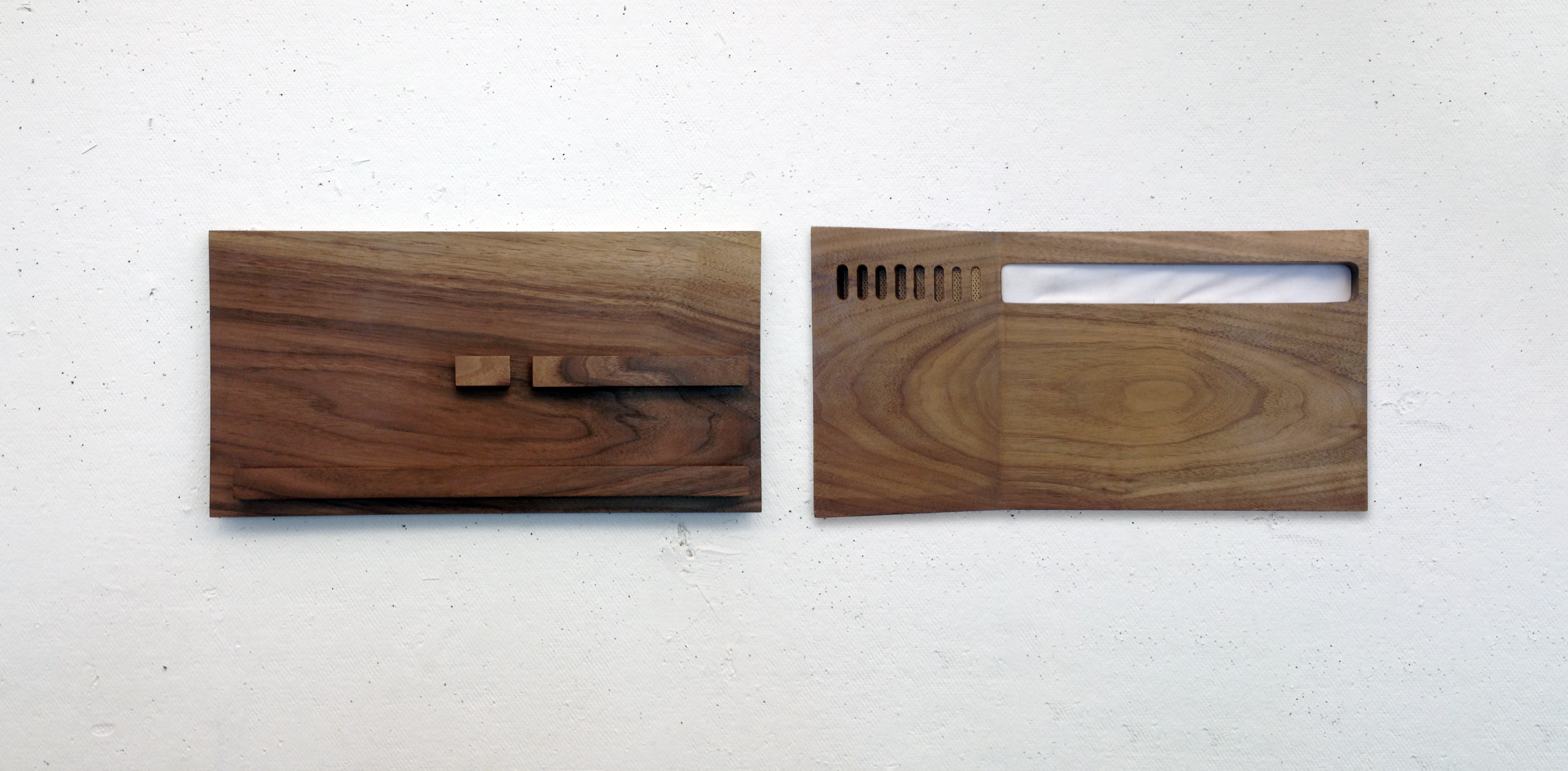
When The Experimental Form Radio is laying on a tabletop, it is off. To turn the radio on, you pick it up and slot it onto a wall mount. The radio leverages the elastic qualities of fabric to control stations and volume. To change stations you press lightly and slide your finger along the fabric surface. To change the volume you press firmly into the fabric, and then slide your finger along the deeper cavity in the radio. The video below showcases the interaction.
Requiring the user to pick up and wall mount the radio to turn on creates a ritualistic experience with a very simple feedback mechanism. If the radio is hanging on the wall it’s on, if the radio is laying on a flat surface then it’s off. The visual and auditory feedback allows the user to have a clear understanding of the system state.

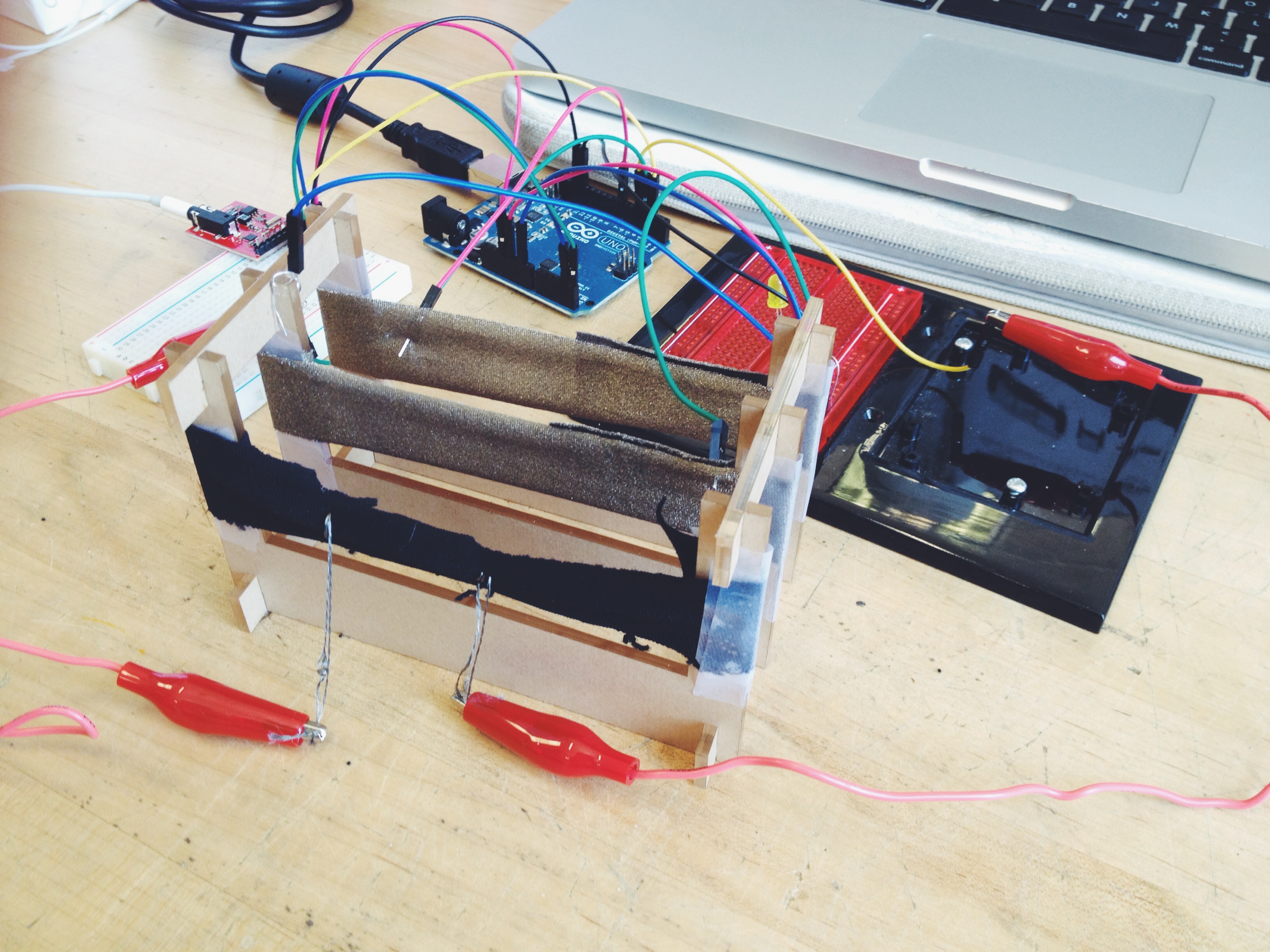
The soft and stretchy material qualities of fabric create a control system that is inviting and pleasurable for the user. The strength of the user’s push as well as the cast shadow on the fabric creates tangible feedback for the user to have better control of the tuning and volume.

Selected Process
